What are T.E.D. stockings?
T.E.D. is an abbreviation of ‘thromboembolism-deterrent‘.
T.E.D. stockings are anti-embolism stockings that are clinically designed and worn to support the venous and lymphatic drainage of the leg, prevent or treat medical conditions such as deep vein thrombosis, and promote increased blood flow.
What is the difference between T.E.D. stockings and compression stockings?
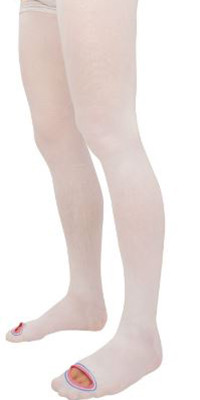
Anti-embolism socks are manufactured to assist bed-ridden patients in boosting blood circulation in the legs and preventing blood clotting, venous thromboembolism and deep vein thrombosis. Doctors tend to prescribe T.E.D. stockings for non-ambulatory patients or to patients post-surgery.
Unlike graduated compression socks, anti-embolism socks are designed to be white in color with a hole in the toe region that assists in monitoring a patient’s recovery, which allows one to visibly see any signs on the feet which could act as an indicator of the patient’s health. Compression socks are also aimed for patients who are able to move around, unlike TED hoses.
The question whether one needs anti-embolism socks or compression socks should be considered.
This is because T.E.D. stockings are typically used for patients recovering from a surgery or bed-ridden for long periods of time. However, they also have a lower pressure gradient, which means they are safe to use without necessarily being in a hospital. They may not be the most ideal choice for people who move a lot though, such as healthy individuals.
What are its benefits?
- Boosts blood flow and circulation to the legs,
- Prevents blood clotting for bed-ridden patients,
- Treats symptoms of venous thromboembolism (VTE) and deep vein thrombosis (DVT),
- Provides comfort during pregnancy,
- Helps reduce swelling in the legs,
- Help treat other health issues such as phlebitis and lymphedema, and
- Maintains warmth.
Popular Articles on ComproGear
What Level of Compression Socks Do I Need? Size Charts for Pressure Stockings and Pantyhose
What is Venous Thromboembolism (VTE)?
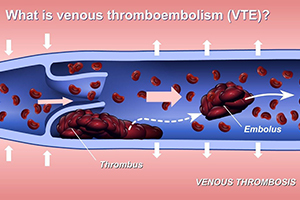
Venous thromboembolism (VTE) refers to a blood clot that starts in a vein. It is commonly caused by having surgery, cancer, immobilization, and hospitalization.
There are two kinds:
1. Deep vein thrombosis (DVT) – A clot in a deep vein, usually in the leg.
2. Pulmonary embolism (PE) – This occurs when a DVT clot detaches from a vein wall, travels to the lungs, then blocks some or all of the blood supply.
How do T.E.D. stockings treat VTE?
Simply put, they gently compress the legs to reduce the risk of blood clots. The pressure increases the blood flow and prevents the leg veins from expanding, which stops blood pooling in your legs and forming a clot.
What about other medical conditions?
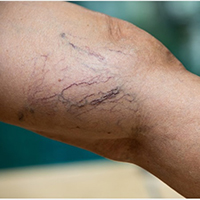
- Varicose veins
These are circular-shaped veins that, upon expanding fully, may cause inflammation that is painful to the legs. They do not disappear on their own once they form. T.E.D. hoses may help in reducing their appearance and pain.
- Phlebitis
This mainly occurs due to clotting of veins caused by inflammation close to the surface and tends to affect people with varicose veins. In severe cases, phlebitis can cause blood clots that may dangerously travel to the brain, heart and lungs. This can lead to occurrence of heart attack and stroke. Wearing T.E.D. stockings is highly advised as it improves circulation, reduces clotting and can end phlebitis by squeezing the veins, reducing any excess liquid that may have formed.
- Spider veins

These damaged veins are small in size and appear on the surface of your legs in a spider web pattern. T.E.D. hoses can reduce spreading of the spider veins by placing pressure on the lower leg’s veins.
- Leg edema
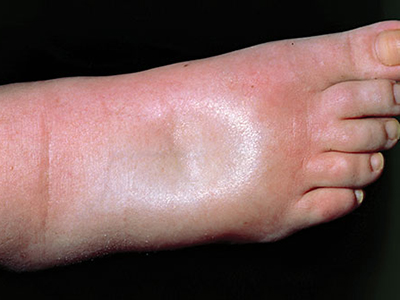
Anti-embolism hoses are useful in treating specific type of edema occurring in the lower parts of the legs. With a low compression, one can treat leg edema both pitting and non-pitting without necessarily having a prescription.
- Lymphedema
This is when a part of your body swells due to unnecessary accumulation of the lymph fluid. This occurs when an interference with normal drainage of lymphatic fluid into the blood. T.E.D. stockings can assist in preventing long-term lymphedema.
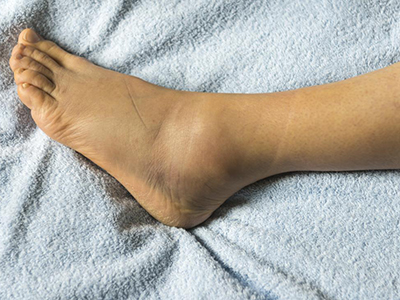
- Swollen ankles
Apart from various extreme causes, hours of immobility can cause ankles to swell; T.E.D. stockings help blood flow effectively.
What are the compression levels of T.E.D. stockings?
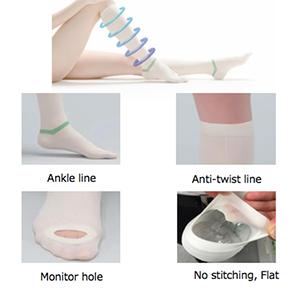
The parameter used for compression levels for both TED hosiery and compression socks is ‘millimeters of mercury‘ (mmHg).
Compression levels typically range from 15-20 mmHg, 20-30 mmHg, and 30-40 mmHg, in which the higher the level, the greater the pressure. A doctor’s prescription is usually required in order to wear those with a compression level of 20 mmHg and higher. For anti-embolism socks, the compression level range is 8-18 mmHg.
It is always necessary to have accurate measurements of the following to ensure a perfectly fitting size: ankles, calves, lower thighs, and upper thighs.
What should be considered when choosing T.E.D. stockings?
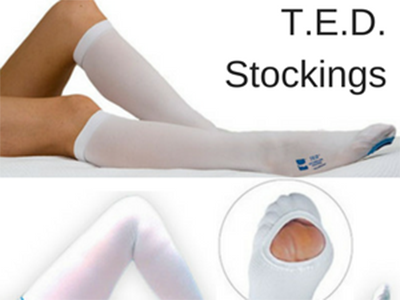
- Length of the stockings
– Knee-high T.E.D. stockings end just below the knee and help in reducing swelling of the legs and peripheral edema effects.
– Thigh-high T.E.D. stockings are best in reducing pooling of blood in the leg. These also help in preventing orthostatic hypotension.
– Thigh-high with waist belt medical hoses are specially designed to prevent thrombosis.
- Ease of application
– Make sure you get the perfect size that fits snugly and comfortably.
– Use of T.E.D. stockings as directed helps to prevent the formation of blood clots in the lower legs. Follow instructions on properly putting on a pair, as follows:
1. Try to first fan-fold the top linens and turn the stocking inside out down to the heel.
2. Slip the foot of the T.E.D stockings over your toes, foot, and heel. The anti embolism hose has an opening in the toe section.
3. Grasp the upper part of the anti embolism stocking and pull it up your leg.
4. The stockings will turn itself right-side out as you pull it up your leg.
